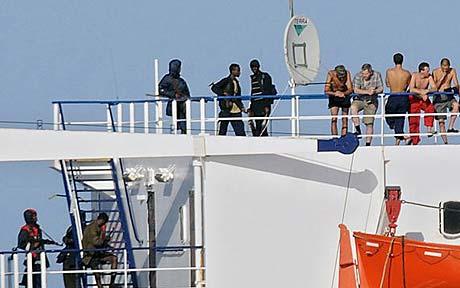
September 2012
The One Earth Future Foundation, the umbrella organization behind Oceans Beyond Piracy, an international piracy watchdog, has released some shocking statistics on piracy.
According to a recent report, 1 out of every 10 hostages involved in piracy incidents experienced extreme torture, including starvation, physical abuse and even simulated drowning.
Overall, of the 1,200 sailors taken hostage last year along, half of them were abused or tortured in some way, marking an escalation in pirate violence.
Somali pirates operate in the Indian Ocean, which is one of the world’s most important shipping areas, and is just as large as the entire land-mass of continental Europe. Because of the large size of the area and the huge number of ships that transit the shipping lanes yearly, piracy is becoming an impossible problem to stop. The cost of piracy to the worldwide economy last year was estimated at $7 billion.
Pirates often lock their hostages away in small rooms and routinely deny them access to food, water and toilets. Pirates murdered eight hostages last year, with another eight dying from medical complications and injuries sustained during captivity, which can last as long as two years. Nineteen more captives were casualties of gunfights between security forces and pirates, bringing the total killed to 35 last year alone.
Because the reach of international naval task-forces is limited, and defense budgets everywhere are shrinking, the shipping industry is left looking to an alternative method of defense against these sea devils. Many have reached out to private-security contractors– the shipping industry spent $1 billion USD on their services last year.
Although expensive, the private-security firms have offered a substantial return on investment– not a single ship employing armed-guards has been successfully hijacked by pirates. With yearly totals upwards of $925 billion worth of oil and cargo passing through the region, that price seems a good bargain to secure the safety and security of global shippers and their human capital.